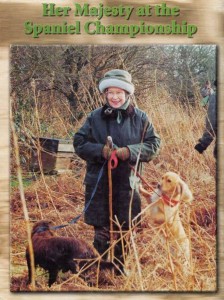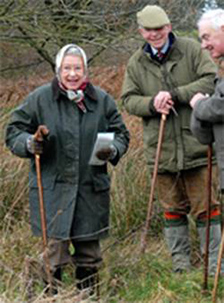Independent to Dependent
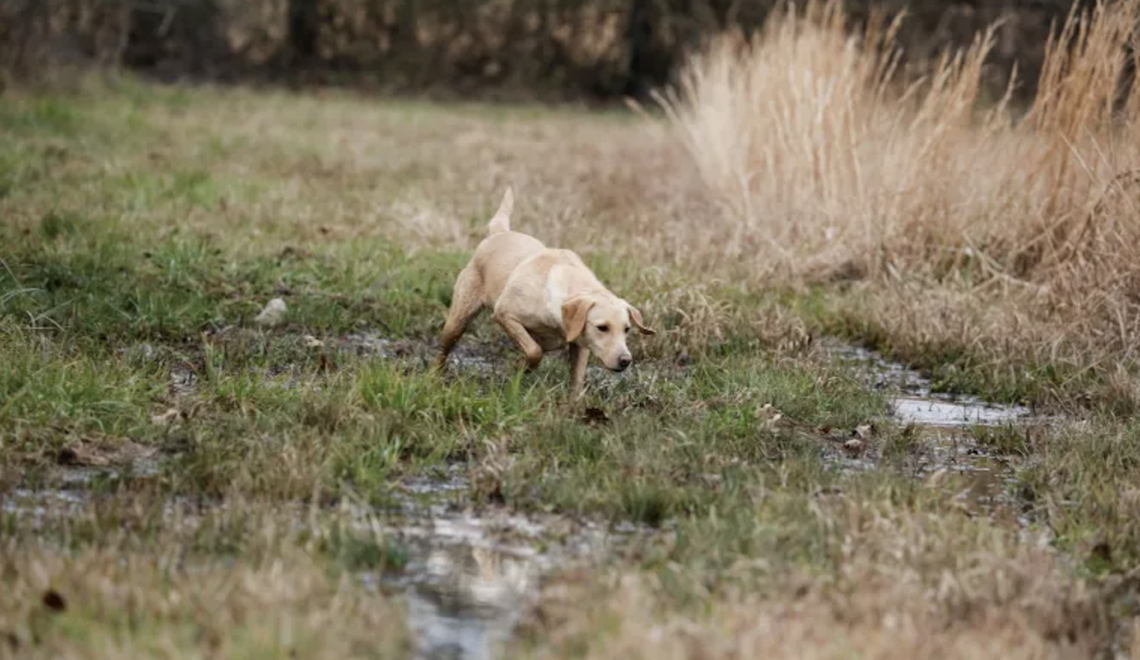
Does your gundog independently hunt on his own turning a deaf ear to commands and directions? Is he or she not stopping to the whistle thinking they “got this,” capable of locating and making the retrieve without any assistance from you, the handler? The cause of dysfunctional independence in retrievers is their lack of trust in the handler’s communications or the dog has had the ability to run around locating birds with no real clear sense of direction from the handler. All the communication that’s going on from the handler has been lots of yelling, profanity and angry emotions which only damages their working relationship with their hunting partner. They simply tune the handler out! There are many Wildrose Laws that apply to these situations relating to the relationship we have with our canine companion in hunting or training environments, but I want to focus on two: #7 “If it’s not right at heel, it won’t be right in the field.” and #16 “First Trust, Then Respect.” We need our dogs to feel confident that we are going to put them on that bird.
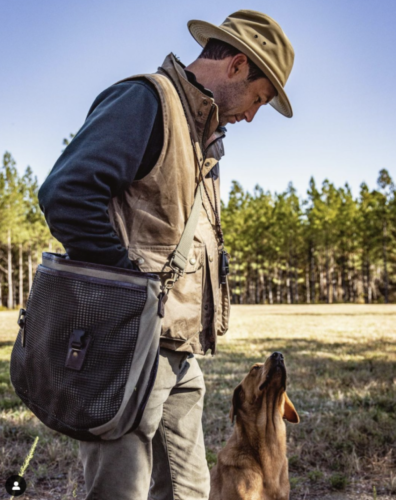 There’s nothing better than sending your dog on a retrieve for a bird you shot down and watch as they drive out to the distance of the bird’s location which fell in some thick cover. After hunting around for a few minutes unsuccessfully the dog stops, looks back at you for direction as if asking “Am I in the right place? Do I need to go anywhere else? Please help.” This is where the relationship between you and your hunting partner needs to be: Interdependence -Teamwork. The Wildrose “Throw Down” drill is going to help you and your hunting pal get to that point in your relationship.
There’s nothing better than sending your dog on a retrieve for a bird you shot down and watch as they drive out to the distance of the bird’s location which fell in some thick cover. After hunting around for a few minutes unsuccessfully the dog stops, looks back at you for direction as if asking “Am I in the right place? Do I need to go anywhere else? Please help.” This is where the relationship between you and your hunting partner needs to be: Interdependence -Teamwork. The Wildrose “Throw Down” drill is going to help you and your hunting pal get to that point in your relationship.
Begin by thinking about how to set up the training sessions. If independence is an issue and the dog is a strong hunter, we may need to set up exercises so that the dog only finds the bumper or tennis ball after doing exactly as directed, responding to hand signals and whistle commands, nothing else.
The “Throw Down” is a hunting drill that keeps the dog hunting cover in close proximity to your position enabling you to step in and make corrections if the dog is not stopping to the whistle. First, make sure the dog understands the hunt command. Your hunt command should be a special signal/cue that is quite different from the lining position used to send the dog on a line for a retrieve. The objective is to have a distinguishable command for hunting in a tight circle pattern within a 5 to 15-yard radius. The signal I use to hunt cover is by snapping my fingers in front of the dog in the direction I want him to cover while giving a verbal hunt command. The hunt command is a clear way to communicate to the dog to go directly into the cover and engage his nose right away rather than driving out through the cover on a line. Tennis balls are great to use for this drill because they make the dog slow down and hone his scenting abilities to locate smaller objects using scent discrimination and even the scent cone rather than sight. This drill should be performed in training after the dog has a basic understanding of handling (back, left, right, hunt in) and stop to the whistle.
To begin the lesson, engage the dog with the chosen hunt command and let the dog begin cruising through the cover searching for the tennis ball or bumper. The dog is certain there is something out there to find, but there’s nothing in the cover yet. While the dog is working, I’ll toss in the object of retrieval as an unseen only after I have what I’m looking for in control. We are working together instead of the dog independently hunting. In the early stages of the drill, I’m looking for only a couple stops to the whistle and a few handles. At each whistle stop, it’s important to hold the dog’s focus and eyes for a good 5-10 seconds before moving him to continue hunting. Envision a circle in the cover that you are working. Your goal is to keep the dog inside that circle holding a tight and methodical hunting pattern. If you’re having issues with getting the dog to stop, having him at close range will allow you to go into the cover to apply a correction or assistance to get the stop and regain control. If unsuccessful in getting him to stop it’s okay, you have not placed the object for retrieval out yet so no reward will be available.
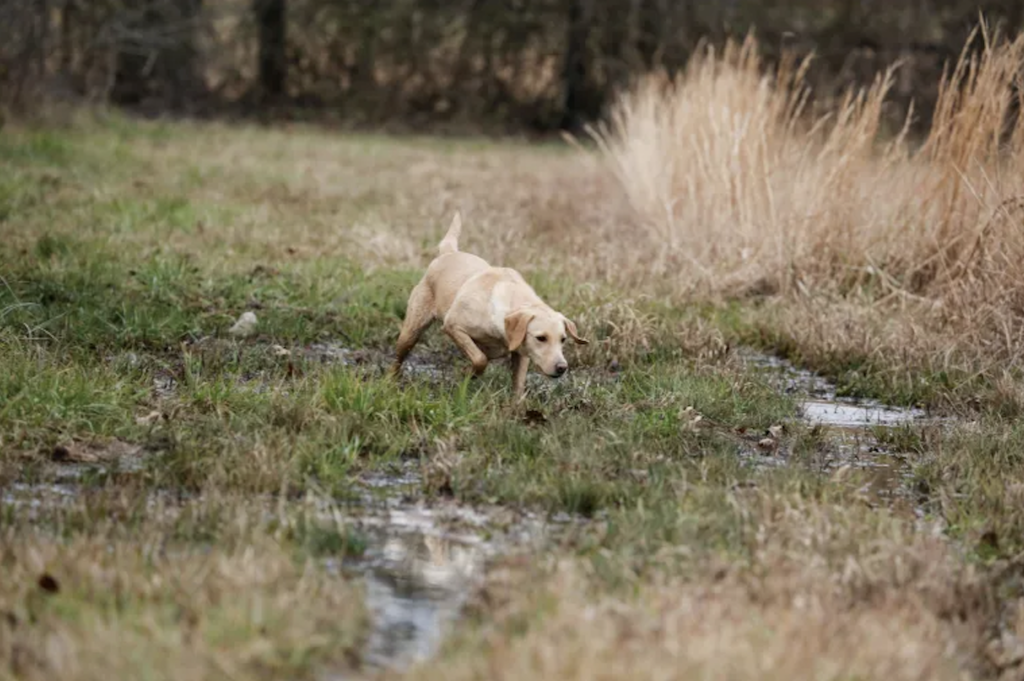
Moving along to the next drill now that the dog is under control and handling by taking my directions quickly and accurately. Here I want the dog to get rewarded for the correct behaviors afield. With this lesson we put the object of retrieval out in cover without the dog’s knowledge by using a “Pre-Plant.” It’s important when doing this that the dog doesn’t see me put the tennis ball out. Once I’ve pre-placed the tennis ball, the dog is directed into the area toward the scent cone so he finds it with my help. This handling drill will ensure the dog is only rewarded while listening and working under control instead of on his own. Before long, the dog will begin hunting knowing you’re going to put him on that tennis ball. Always be attentive in the way you communicate with your dog.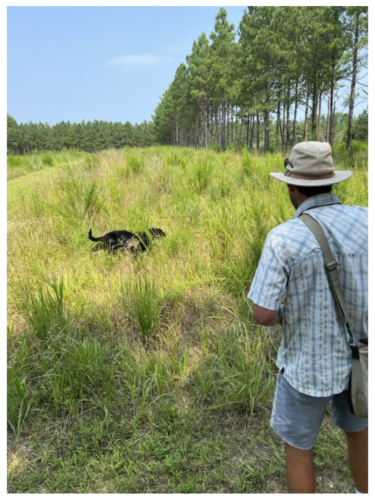
In the pictures to follow, you will see Witmer with me working on this exercise. Notice that when I stop him, I have my hand up as a good focus point for him to find when he looks up at me for direction. After casting him a few times, I toss the tennis ball in the cover behind him (Throw Down) so that he does not see the ball put into play. We typically use 3-whistle stops each followed by a cast before tossing in the object to be found. My objective is to use the whistle and correct hand signals to put him right on top of the scent or within the scent cone.
This is a great activity to use as a counter skill to end the training day. Also, the practice should be run several times throughout the hunting session as a tune-up exercise to keep your gundog’s handling sharp and interdependent.


